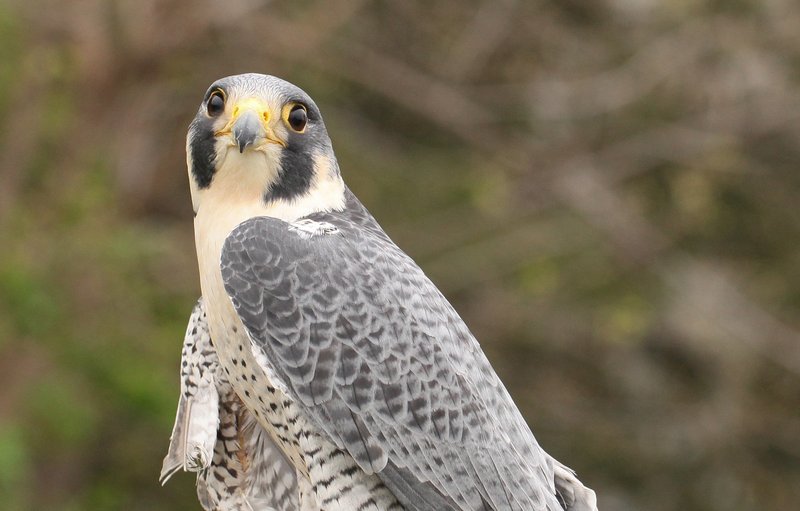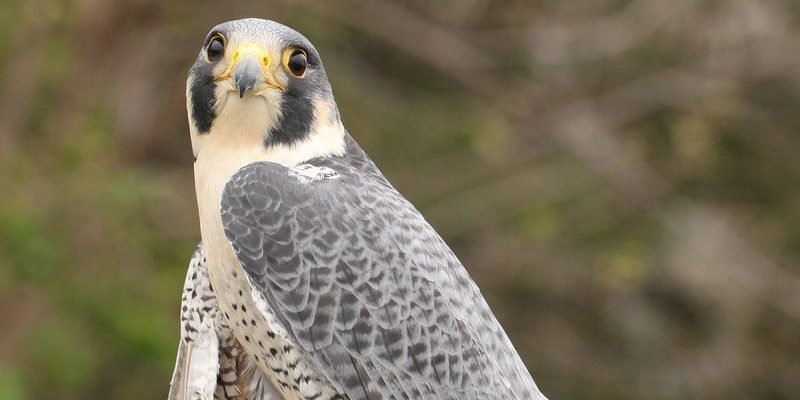
While peregrine falcons are famous for their speed, there’s way more to them than just their reputation as the fastest bird. From their unique hunting techniques to their fascinating breeding habits, these birds lead a life that’s as captivating as it is complex. So, grab your coffee, and let’s explore some tidbits about the peregrine falcon that might just surprise you.
1. The Fastest Animal on Earth
When it comes to speed, nothing quite compares to the peregrine falcon. In a dive, known as a “stoop,” they can reach speeds over 240 miles per hour. To put that into perspective, that’s faster than a Formula 1 race car! They achieve this insane velocity by tucking in their wings and letting gravity do most of the work. It’s a breathtaking sight that leaves many birdwatchers in awe.
But why do they dive at such high speeds? It’s all about hunting. The peregrine uses this incredible speed to surprise and catch its prey, which often includes small birds like doves and sparrows. Imagine being a small bird, blissfully flying along, only to have a peregrine falcon swoop down out of nowhere! That’s the element of surprise they rely on.
2. Unique Adaptations for Hunting
Peregrine falcons have several unique adaptations that make them exceptional hunters. One of the most fascinating features is their keen eyesight. They can spot a prey from over a mile away. Think of them as nature’s long-range snipers. Their eyes have a special structure that allows them to see ultraviolet light, which helps them detect the urine trails of prey that are invisible to humans.
Another cool adaptation is their specialized beak. The peregrine has a hooked beak that helps it catch and kill its prey efficiently. This beak is also equipped with a unique notch called the tomial tooth, which helps them break the necks of their prey quickly. It’s a design perfected through millions of years of evolution.
3. A Global Traveler
Did you know that peregrine falcons are found on every continent except Antarctica? These birds are incredible travelers, with some populations migrating thousands of miles every year. For instance, those nesting in North America often migrate to Central and South America for the winter.
Their migratory patterns vary based on their location. Some groups are resident birds, sticking around their breeding grounds year-round, while others are highly migratory. Think of them as the globetrotters of the bird world, adapting their habits to find food and suitable breeding areas, ensuring their survival.
4. Stunning Coloration and Features
You might think all birds of prey look similar, but the peregrine falcon boasts some truly stunning features. With slate-blue wings, a white chest, and distinctive black markings on its face, it’s a striking sight. This striking appearance isn’t just for show; it serves a purpose. The dark feathers on their head help reduce glare from the sun, making it easier for them to spot prey while soaring high above.
Additionally, their body is sleek and aerodynamic. This design helps minimize air resistance, allowing them to reach those amazing speeds. It’s like nature’s version of a sports car, built for both beauty and efficiency.
5. Complex Courtship Rituals
When it’s time to find a mate, peregrine falcons engage in an elaborate courtship ritual. Males will perform aerial displays to woo the females, showcasing their flight skills by diving and swooping in sync. This impressive show isn’t just for entertainment; it’s vital for establishing their bond and ensuring they’re a compatible pair.
Once paired, they will often remain together for life, returning to the same nesting site year after year. This loyalty is quite touching; even in the avian world, love is in the air!
6. Nesting in Unlikely Places
Peregrine falcons are known for their adaptability, especially when it comes to nesting. While they traditionally prefer cliff faces, they’ve also taken to urban environments. You might find them nesting on skyscrapers, bridges, or even ledges of buildings in bustling cities.
This behavior not only highlights their incredible adaptability but also gives urban birdwatchers a chance to witness their beauty up close. They’ll often return to the same spot each year, making their homes in some of the most unexpected places. Imagine discovering a falcon’s nest just a few floors away from your office!
7. Conservation Success Story
Once on the brink of extinction due to pesticide use, particularly DDT, peregrine falcons have made a stunning comeback. Thanks to conservation efforts and the banning of harmful chemicals, their populations have rebounded across much of their range.
Organizations have worked hard to monitor and protect these magnificent birds, creating programs to install nesting boxes in urban areas. Their recovery is a powerful reminder of what can be achieved when humans take action to protect wildlife.
8. Symbol of Speed and Power
Throughout history, the peregrine falcon has held a significant place in culture and folklore. Often seen as a symbol of speed and power, they’ve inspired countless stories, flags, and even mascots. Many sports teams and organizations adopt the falcon as a logo, embodying the qualities of agility and prowess.
It’s fascinating to see how this bird has woven itself into human culture shows just how impactful these amazing creatures can be. Their grace in the air illustrates a sense of freedom we all aspire to.
9. Importance in Ecosystems
Peregrine falcons play a crucial role in maintaining healthy ecosystems. As top predators, they help control the population of smaller birds, ensuring a balance within their habitats. If too many small birds thrive, it can lead to overpopulation and strain on resources.
By keeping these populations in check, peregrines help promote biodiversity. The presence of these magnificent birds can signal a healthy environment, acting as indicators of the overall health of ecosystems.
10. Fascinating Research and Monitoring
Scientists and ornithologists continue to study peregrine falcons to better understand their behavior, migration patterns, and population dynamics. Advanced techniques, like GPS tracking, have given researchers insight into their migration routes and habitat preferences. This information is vital for ongoing conservation efforts.
By learning more about these birds, we not only protect them but also enrich our understanding of the natural world. Every bit of research helps ensure that future generations can appreciate the beauty of the peregrine falcon.
As we wrap up our journey through the world of the peregrine falcon, it’s clear these birds are more than just the fastest animals on Earth. They are fascinating creatures with unique adaptations, captivating behaviors, and important roles in their ecosystems. Understanding them deepens our appreciation for wildlife and the delicate balance of nature. So next time you see a falcon soaring above, remember—there’s a lot more to this winged wonder than meets the eye!

